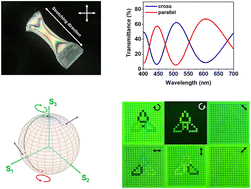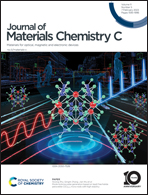Bacterial cellulose wave plates for polarization-encryption applications†
Abstract
Bacterial cellulose (BC)-based wave plates with tunable phase delays from the visible to near-infrared region are developed. Simple wet stretching and filling with similar refractive index polymers endow BC nanocomposite films with orientational birefringence and high transparency. The BC-based wave plates showing precise control of the polarization state of polarized light are used for polarization-encryption applications.

- This article is part of the themed collection: Circularly Polarised Luminescence


 Please wait while we load your content...
Please wait while we load your content...